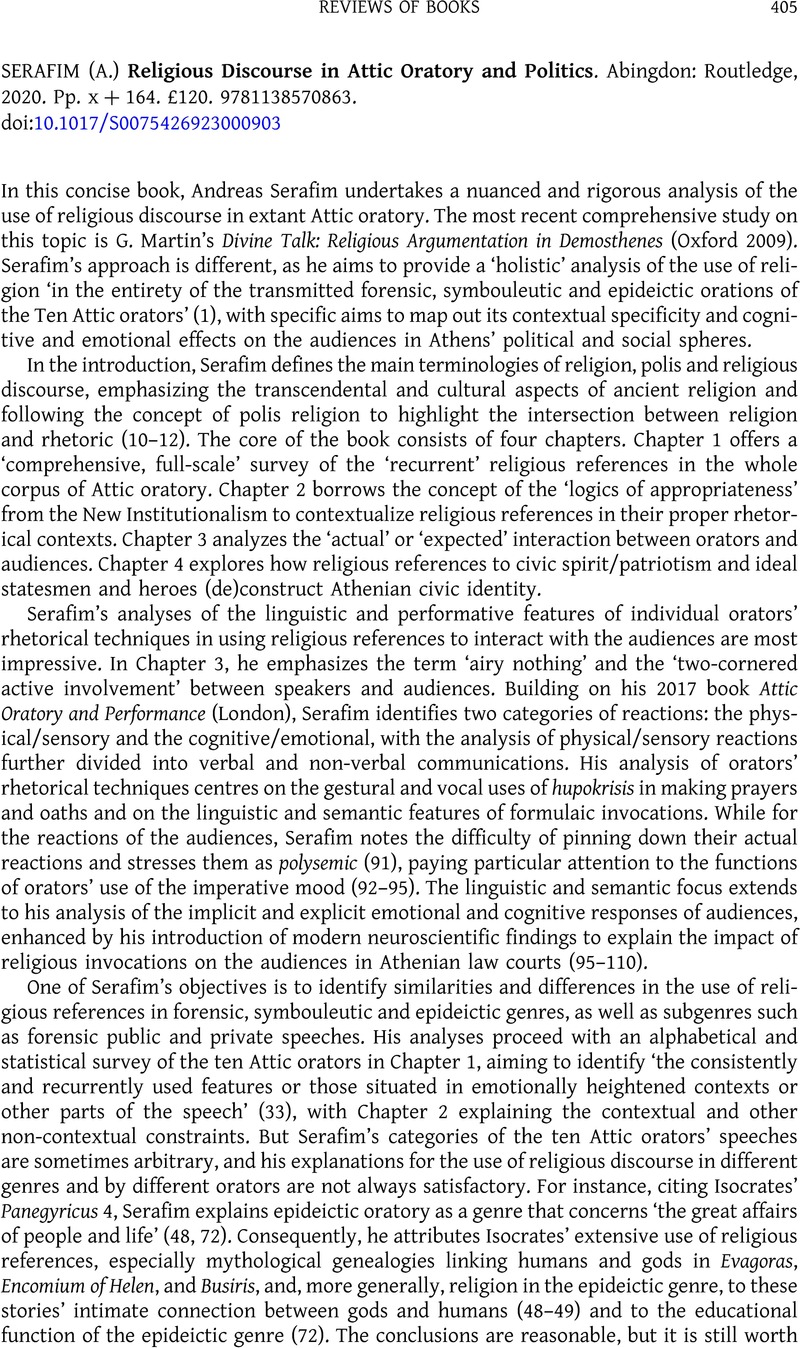No CrossRef data available.
Article contents
(A.) SERAFIM Religious Discourse in Attic Oratory and Politics. Abingdon: Routledge, 2020. Pp. x + 164. £120. 9781138570863.
Review products
(A.) SERAFIM Religious Discourse in Attic Oratory and Politics. Abingdon: Routledge, 2020. Pp. x + 164. £120. 9781138570863.
Part of:
History
Published online by Cambridge University Press: 12 October 2023
Abstract
An abstract is not available for this content so a preview has been provided. Please use the Get access link above for information on how to access this content.

- Type
- Reviews of Books: History
- Information
- Copyright
- © The Author(s), 2023. Published by Cambridge University Press on behalf of the Society for the Promotion of Hellenic Studies


